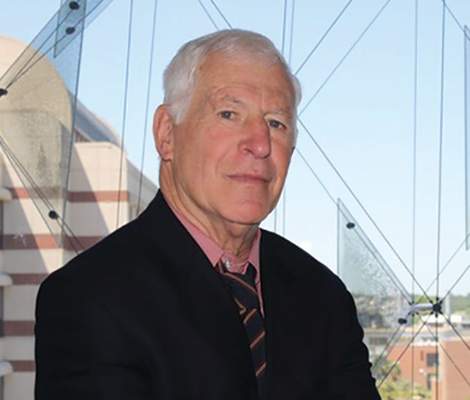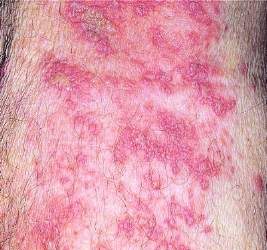EXPERT ANALYSIS FROM The ASCP ANNUAL MEETING
MIAMI (FRONTLINE MEDICAL NEWS) – The pathophysiology of tardive dyskinesia remains a mystery, but patients with this involuntary movement disorder have new hope – thanks to recent approval of the first agent indicated for the condition and the anticipated approval of a second.
“These drugs actually work and are safe,” Ira D. Glick, MD , professor emeritus of psychiatry and behavioral sciences at Stanford (Calif.) University, said during a panel addressing the disorder at a meeting of the American Society of Clinical Psychopharmacology, formerly the New Clinical Drug Evaluation Unit meeting.
The vesicular monoamine transport type 2 inhibitor valbenazine (Ingrezza, Neurocrine Biosciences) was approved earlier this year by the Food and Drug Administration, and a second VMAT2 inhibitor, deutetrabenazine (Teva), is scheduled for an FDA Prescription Drug User Fee Act review later this summer.
Those two novel agents downregulate the delivery of dopamine released by monoamine-containing presynaptic vesicles, thus decreasing the stimulation of the D2 receptors, and lessening the frequency and severity of involuntary movements associated with tardive dyskinesia (TD). The difference between them is that valbenazine converts to metabolites with no off-target affinities; deutetrabenazine modifies the pharmacokinetic pathway, slowing the rate of metabolization of the agent.
A phase 2, 6‐week dose‐titration study of valbenazine in 102 subjects with moderate to severe TD showed that the drug significantly reduced TD severity according to the Abnormal Involuntary Movement Scale (AIMS) when dosed at 25 mg and 75 mg, compared with placebo (P = .0005), and to the Clinical Global Impression of Change–Tardive Dyskinesia (P less than .0001) ( Mov Disord. 2015 Oct;30[2]:1681-7 ).
Efficacy data from a pivotal 6-week, phase 3, double-blind, fixed-dosage, placebo-controlled, intention-to-treat study of 234 participants with moderate to severe antipsychotic-induced TD also showed favorable changes in AIMS scores in both the 80-mg and 40-mg groups, compared with placebo (P less than .05 for the valbenazine 40-mg group and P less than .001 for the 80-mg group) ( Am J Psychiatry. 2017 May 1;174[5]:476-84 ). Both doses were efficacious and showed superiority over placebo with the 80-mg dose having a large effect size of 0.90. According to 52-week follow-up maintenance data presented by Dr. Glick, TD symptoms in the 80-mg group remitted until week 48, when patients were removed from their regimens.
“Here is what happens when you take patients off the drug: They relapse to where they were,” Dr. Glick said, noting that by week 52, the cohort essentially had returned to baseline AIMS scores. Somnolence is the main side effect, according to the drug’s package insert .
Clinical data for deutetrabenazine summarized by Dr. Glick indicated that in a 12-week trial in 117 people with moderate to severe TD, 24-mg and 36-mg doses of the drug separated “nicely” from placebo, had a robust efficacy profile in patients with worse symptoms, compared with placebo, a number needed to treat of 6, mild side effects, and no associated adverse events. Dr. Glick said phase 3 clinical trial data indicate that somnolence is once again the main side effect, that the drug was not associated with depression or suicidal ideation, and had low rates of psychiatric adverse events.
Although the exact pathophysiology of TD is unknown, according to panelist Leslie L. Citrome, MD, MPH , traditionally it was thought to be an associated adverse event of antidopaminergic use, particularly with first-generation antipsychotics. However, since TD also occurs with second-generation antipsychotics, and because symptoms frequently persist after antipsychotic use is discontinued, Dr. Citrome said the role of neurodegeneration, which can be exacerbated by oxidative stress and genetic vulnerability, also is implicated in the development of TD. The relationship between TD and decreased levels of brain-derived neurotropic factor, which contributes to the health of neurons, also is nascent in the literature, said Dr. Citrome, clinical professor of psychiatry and behavioral sciences at New York Medical College in Valhalla.
Until valbenazine’s approval, the most common treatment for TD was the orphan drug oral tetrabenazine, a reversible VMAT2 inhibitor that succeeded reserpine for TD treatment when it was discovered not to affect VMAT1, which occurs primarily in the peripheral nervous system. Reserpine irreversibly affects both VMAT1 and VMAT2. Tetrabenazine in the United States is indicated only for chorea in Huntington’s disease, making it highly expensive, according to Dr. Citrome, who also cited the drug’s short half-life and boxed warning for depression and suicidality as drawbacks.
“Its adverse events are problematic, and we don’t really have terrific evidence for its efficacy in TD,” he said.
However, of all the available TD treatments with any associated clinical data, including clonazepam, ginkgo biloba, branch chain amino acids, and amantadine, tetrabenazine’s wide acceptance made it the most “logical” starting point for a more effective treatment of TD, said Dr. Citrome.
The most well tolerated approach remains unclear, Dr. Citrome said. No head-to-head trials of valbenazine vs. deutetrabenazine have as yet been completed, and there are no prospective data. However, said Dr. Glick: “Think of your patients. They have schizophrenia, bipolar disease, terrible diseases. Then they get TD on top of that. How they suffer. Then you give them something that actually works.”
Dr. Glick disclosed that he has many industry ties, including with deutetrabenazine’s study sponsor Teva, as well as with Otsuka, and Takeda. Dr. Citrome disclosed that among his many pharmaceutical industry ties is Neurocrine Biosciences, manufacturer of valbenazine.
On Twitter @whitneymcknight





